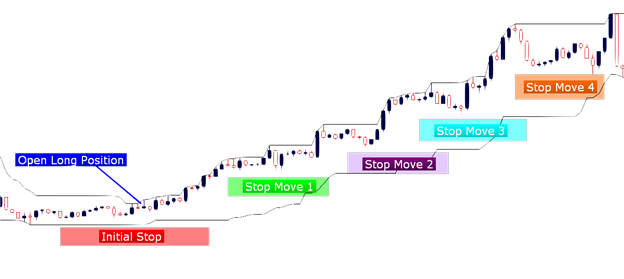How Trailing Stops can assist with Trade Management
By James Stanley
One of the toughest decisions that a trader faces day in and day out, often-times, isn’t how to enter into positions. Through experience and repetition a trader will usually have a good idea of how they want to enter markets or situations in which they want to trade. The toughest decision that most traders face on a continual basis is ‘When should I exit?’
I want to start by stating that I believe there isn’t one perfect way to exit a trade. Never has been, probably never will be. While we are in a trade, much like before we enter – we have no control over price nor is there any way of predicting what will happen next.
Traders are faced with the age-old conundrum: “Should I risk my gains in an attempt to get more, or should I take the money and run?”
In both scenarios there is opportunity cost. If we leave the position open in an attempt to get additional gains, and the trade reverses against us – well we’ve just given up our profit. If the trader didn’t adjust the stop to breakeven while being up in the trade, the trader very-well may end up taking a loss; allowing a winner to become a loser, which can be a painful psychological experience.
On the other hand, if we decide to take our profit off the table and the position continues moving in our favor – well, we’ve just given up potential profit, which in the case of an extended trend, can be significant.
The question of whether or not to take profits is confounded by the issue that as traders, we will likely never know definitively what will happen next.
One option for combating this conundrum is the ‘Trailing Stop.’ The stop, as many traders know, is a mechanism by which we can manage risk. By placing a stop on the trade, we are drawing our line in the sand, attempting to limit the risk of the position moving against us. Many traders associate stops with losing their trades.
But it doesn’t have to be that way. Stops can close out profitable trades too.
The ‘Trailing Stop,’ is a stop that is adjusted as the trade moves in your favor.
Trailing Stops come in many different shapes, and this can be customized to the traders’ goals in the trade. The below graphic illustrates the mechanism of a trailing stop:

Created with Trading Station 2/Marketscope
As you can see from the above illustration, as the position continues moving in the trader’s favor the stop is continually adjusted higher; locking up additional gain as the stop is progressively moved higher.
If the currency pair retraces beyond the stop value, the trade will be ‘activated,’ and the position closed. The hope of using the trailing stop is that the move will be strong enough to adjust the stop far beyond where I may have initially looked to take profits; allowing me to garner an additional gain.
The trailing stop can be performed manually, by the trader adjusting the stop progressively higher as the trade moves in the money. Alternatively, the trailing stop can be automated on the Trading Station 2 Platform. When setting stops, the box for ‘trailing,’ allows the choice between a ‘Dynamic,’ or ‘Fixed,’ trailing stop.
The Dynamic Trailing stop will adjust the requested stop value higher for each 1/10th of a pip movement in the trades’ direction.
The Fixed Trailing stop will adjust when the pre-determined pip-move takes place. For instance, in the below graphic while opening a market order, I’ve added a ‘Fixed trailing stop,’ of 10 pips, set at 3500 on my short position.
When my short position is 10 pips in the money, the stop of 3500 will be adjusted 10 pips in my favor (3490 would be the next level since this was a short position).

Created with Trading Station 2/Marketscope
Additional resources:
DailyFX PLUS Online Video Course – Money Management Lesson 1
Clarifying the 5% Money Management Rule
To contact James Stanley, please email Instructor@DailyFX.Com. You can follow James on Twitter @JStanleyFX.
To join James Stanley’s distribution list, please click here.




